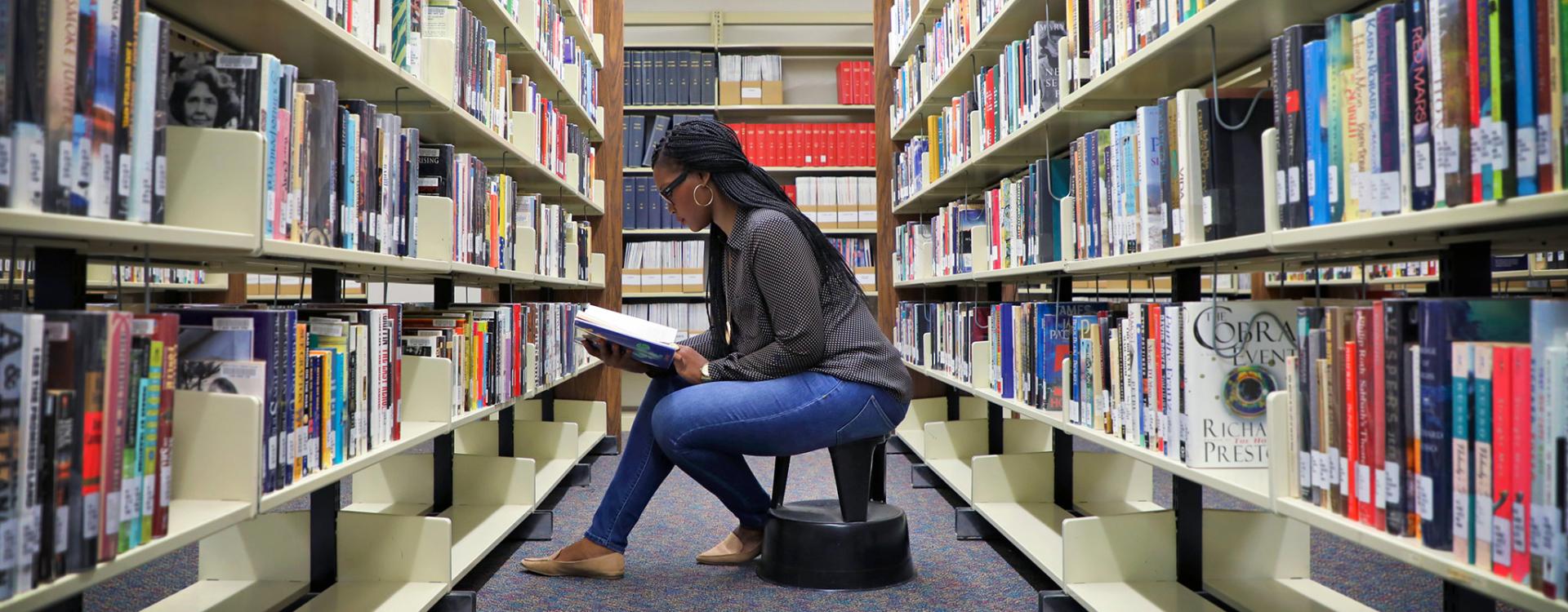What We're Reading: Persepolis

Title: Persepolis
Author: Marjane Satrapi
Genres: memoir, history, graphic novel
2022 Read Great Things Categor(ies): A book about travel; An Artsy Book; A book about community
Political protests in Iran have been in the headlines over the past two weeks, with numerous demonstrations in the country propelled by the death of Mahsa Amini, a young woman who died while in police custody. Today I'm highlighting an accessible and personal history of conflict within and surrounding Iran from the perspective of a young woman, Marjane Satrapi's Persepolis, which is available at the library.
This book was read by Main Campus Reference Librarian Kyle Minton, who loves graphic novels mixed with a history lesson. (It's also available as a streaming film, click to read more.)
Why did you choose to read this book?
Marjane Satrapi's Persepolis was released in English as a two-volume story in 2003 and 2004 and is a staple for most modern graphic novel collections in libraries. It follows Marjane Satrapi's childhood in Iran and follows her as she grows into her teenage years and is forced to leave her home country during the Iran-Iraq war. It was adapted into an academy award-nominated animated film in 2007 (Durham Tech students can stream the film adaptation through the library's resources.) Persepolis is a modern classic, and like other classics, it can feel like a too-obvious choice to pick off the shelf. One could say I finally got around to seeing what the fuss was about.
What did you like about it?
Satrapi's illustrations are immediately inviting and work across both the tragic and comedic elements peppered throughout the book. The apparent strength of the book lies in Satrapi's solemn reflections on her family, her community, and her navigation of the inner turmoil of having to leave Iran during the Iran-Iraq war. For those worried about a total lack of levity in a comic book, there's plenty of youthful joy found in her illustrations of how influenced she is by western music and punk clothing.
As humorous as it can be, I also appreciated Satrapi's willingness to dive into the complicated feelings processed by her parents, who are more progressive than the ruling authorities and walk a delicate line between raising an independent child with their values, while also raising caution about the social and legal repercussions of disobeying authoritarian rule during wartime.

Is there anything noteworthy about the book?
Satrapi's honesty with her choices as a child and teenager under war is still remarkable, even 20 years later. Her actions as a kid and then as a teen constantly test the authoritarian forces surrounding her, both inside and outside of Iran. While readers might expect sadness revolving leaving one's home during wartime, the attention to feelings of alienation Satrapi experienced in Europe after leaving Iran makes for an emotionally complex journey as she reaches adulthood and processes what it means to be Iranian in the wider world.
Who else might like this book?
I'd recommend this to anyone who has had to explore a new culture while feeling homesick; Readers who want to see the emotional development of a strong and creative Iranian woman; and Readers who are curious about the strengths of graphic novels. While this is a "fun" starting place for learning about the conflicts surrounding Iran, I'd also recommend going to a history book, such as Iran: A Modern History (available as eBook) for far more in-depth learning on the country.
What would you pair the book with?
Some suggestions:
- Persepolis, the animated film version of the book
- Chicken With Plums, a film adaptation of Satrapi's other notable graphic novel
- One of the most famous Iranian films, Abbas Kiarostami's film, Close-up, which as of this writing can be streamed in its entirety on YouTube
- Some more books available on Main Campus:

